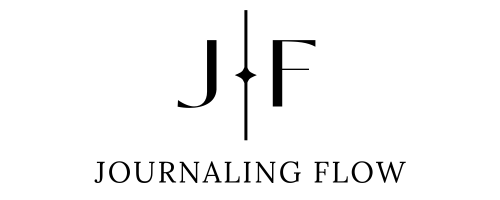
Goal setting is essential for personal and professional growth, but how do you keep track of your progress and stay motivated? Journaling is a powerful tool to not only define your goals but also break them down into actionable steps. In this post, we’ll explore various journaling techniques to help you set clear goals, track your progress, and ultimately achieve them. We’ll also share examples and templates to guide you on your journey.
Why Use Journaling for Goal Setting?
Journaling helps you gain clarity on what you want to achieve and keeps you accountable throughout the process. When you write down your goals, you’re more likely to stay focused, organised, and motivated. It’s a simple yet effective way to track your growth and adjust your plans as necessary.
Key benefits of journaling for goal setting include:
- Increased clarity: Writing down your goals helps you visualise and clarify what you want.
- Motivation: Seeing your progress in writing can boost your motivation.
- Accountability: Journaling creates a personal record of your journey, helping you stay committed.
Techniques for Goal Setting Through Journaling
Here are some techniques to use in your journal to set and achieve goals:
1. SMART Goals
The SMART framework is a classic goal-setting method that ensures your objectives are Specific, Measurable, Achievable, Relevant, and Time-bound. Here’s how you can break it down in your journal:
- Specific: Clearly define the goal (e.g., “I want to save £500 for a vacation”).
- Measurable: Identify how you’ll measure success (e.g., “I will save £100 per month”).
- Achievable: Ensure the goal is realistic (e.g., “I will cut back on non-essential spending”).
- Relevant: Align the goal with your broader life priorities (e.g., “A vacation will allow me to recharge”).
- Time-bound: Set a deadline (e.g., “I will save this amount in 5 months”).
Example:
Goal: Save £500 for a vacation
Steps: Write down each step you need to take, such as opening a savings account, setting a budget, and tracking monthly contributions.
2. Daily Intention Journaling
Set an intention at the beginning of each day that aligns with your bigger goals. Intentions are less rigid than goals, but they keep you focused on positive actions that contribute to long-term success. For example:
- Daily intention: “Today, I will work on being more mindful of my spending to reach my savings goal.”
- Reflection: At the end of the day, write down how you stayed true to your intention or where you struggled.
This practice creates a strong habit of mindfulness and ensures you take consistent steps toward your goals.
3. Vision Journaling
Vision journaling involves writing about your ideal future in vivid detail, allowing you to explore your long-term goals and dreams. By painting a picture of your future self or success, you keep your larger goals top of mind.
- Technique: Write as if you’ve already achieved your goal. For example, “I’m sitting on a beach, feeling relaxed, knowing I’ve saved enough for this vacation.”
- Benefit: This method taps into your emotions and helps you stay motivated when obstacles arise.
4. Progress Tracking
Tracking your progress is crucial for achieving your goals. In your journal, break down your goals into small, manageable milestones, and review your progress regularly.
- Technique: Create a monthly or weekly review where you check off completed tasks and reflect on what’s working or what needs adjustment.
- Example: If your goal is to improve your fitness, track your workouts, energy levels, and any challenges you faced.
5. Gratitude and Affirmations
Incorporating gratitude and affirmations into your journaling can enhance your goal-setting process. When you celebrate small wins, you acknowledge the progress you’ve made, which boosts motivation.
- Example: Write down one thing you’re grateful for each time you make progress toward your goal, like “I’m grateful I saved £50 this week.”
Affirmations can also help you maintain a positive mindset, which is critical for long-term success:
- Example: “I am capable of achieving my savings goal by staying disciplined and focused.”
Example Goal-Setting Journal Template
Here’s a simple goal-setting template to use in your journal:
Goal: [Write your goal here]
Why this goal matters: [Explain why this goal is important to you]
Start Date: [Date]
Deadline: [Date]
Milestones:
- Milestone 1: [Action step or sub-goal]
- Milestone 2: [Action step or sub-goal]
- Milestone 3: [Action step or sub-goal]
Challenges:
- [Identify any potential obstacles]
Progress Review:
- [Weekly or monthly reflections on what’s working, adjustments, and next steps]
Conclusion: Achieving Goals Through Journaling
Using journaling as a tool for goal setting and tracking is a simple yet effective way to stay on course. Whether you’re setting daily intentions, writing affirmations, or using the SMART framework, the key is consistency and reflection. Your journal can become a powerful record of your journey toward personal growth, achievement, and success.
Want more journaling inspiration?
Get exclusive prompts, techniques, and insights straight to your inbox.
Join the Journaling Flow newsletter today!




April 1, 2025
[…] a space for reflection but a practical method for improving time management, boosting focus, and setting meaningful goals. In today’s fast-paced work environment, taking the time to journal can help you stay organised, […]